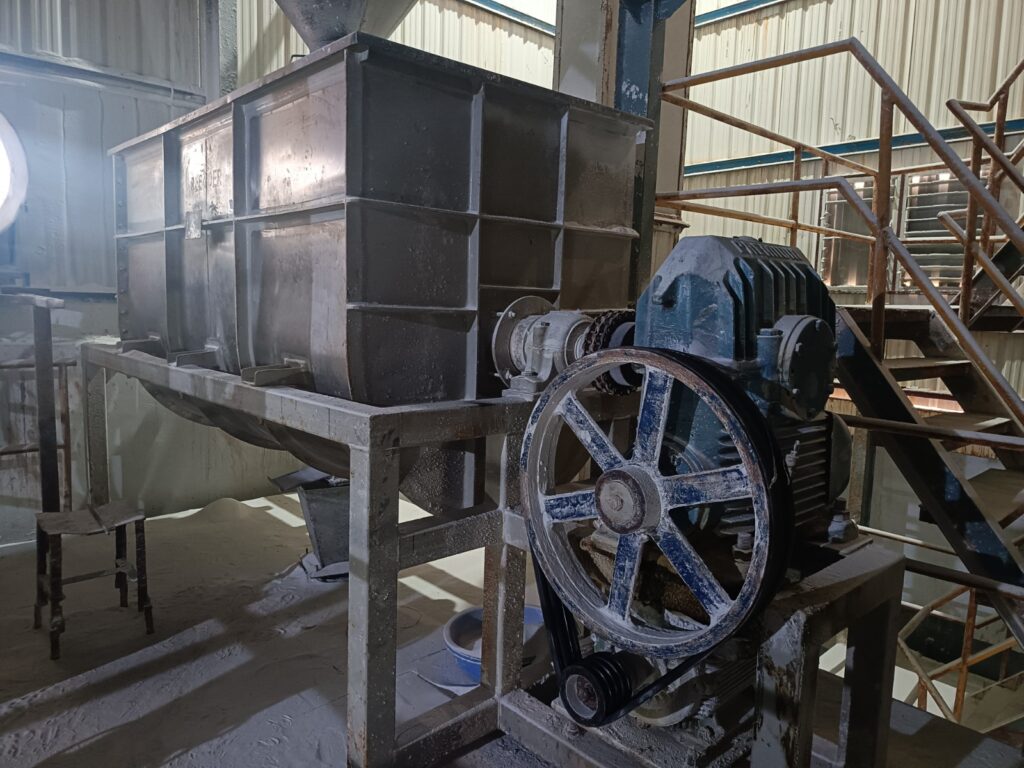Our Machinery for Fortificaton of Edible Salt
Salt fortification is an essential public health strategy to address various micronutrient deficiencies.
Salt fortification is an essential public health strategy to address various micronutrient deficiencies. The main points of salt fortification include:
Iodine Fortification: This is primarily done to combat iodine deficiency, which can lead to disorders such as goiter and cognitive impairments. Iodine fortification of salt has significantly reduced the prevalence of iodine deficiency disorders globally.
Iron Fortification: Adding iron to salt helps fight against anemia and iron deficiency. These conditions are widespread and can cause symptoms like fatigue, weakened immunity, and impaired cognitive development.
Zinc Fortification: Fortifying salt with zinc addresses zinc deficiency, which is vital for immune function, growth, and development. Adequate zinc levels are crucial for maintaining overall health and well-being.
By incorporating iodine, iron, and zinc into salt, public health initiatives can simultaneously address multiple micronutrient deficiencies, thereby improving health outcomes across different populations.

Salt fortification with iron and zinc is a process aimed at enriching ordinary table salt with essential micronutrients like iron and zinc to address deficiencies in populations where these nutrients are lacking. Here’s how it’s typically done using ribbon blenders and continuous process equipment:
Preparation of Iron and Zinc Premix:
- Iron and zinc compounds, such as ferrous sulfate or ferrous fumarate for iron, and zinc sulfate or zinc oxide for zinc, are typically used as fortificants.
- These compounds are first ground into fine powders to ensure uniform distribution within the salt.
Mixing in Ribbon Blender:
- A ribbon blender is a type of batch mixer commonly used in industrial settings for blending dry powders.
- In this process, the ordinary table salt is loaded into the ribbon blender.
- The iron and zinc premix, prepared in the previous step, is then added to the salt in the blender.
- The ribbon blender’s design, with its inner and outer helical ribbons, ensures thorough mixing, resulting in a homogeneous mixture of salt and fortificants.
Continuous Process Equipment:
- After mixing, the salt fortified with iron and zinc moves into continuous process equipment for further processing.
- This equipment can include conveyor belts, vibratory feeders, or screw conveyors that transport the mixed salt to the next stage of the process.
Drying (if necessary):
- Depending on the moisture content of the salt and the specific requirements of the process, drying may be necessary to remove excess moisture.
- Continuous dryers, such as fluidized bed dryers or rotary dryers, can be employed to reduce the moisture content of the fortified salt to the desired level.
Packaging:
- Once the fortified salt has been thoroughly mixed and dried (if needed), it is ready for packaging.
- Packaging equipment, such as automatic bagging machines or filling lines, is used to package the fortified salt into appropriate containers, such as bags or sachets.
- Proper packaging is crucial to protect the fortified salt from moisture and contaminants and to ensure its shelf stability.
By fortifying salt with iron and zinc using ribbon blenders and continuous process equipment, it becomes possible to produce a fortified product that can help address micronutrient deficiencies in populations, especially in regions where access to diverse diets or nutrient-rich foods is limited.
pure salt
Iodine, Iron & Zink
What can be better than fresh healthy food delivered right to the doorstep? We take great care of every order that you place with our store!
Low Sodium Salt For
Choosing the Right Low Sodium Salt
When selecting a low sodium salt, consider the following:
- Health Needs: Consult with a healthcare provider, especially if you have kidney disease or other health conditions.
- Taste Preference: Experiment with different types to find one that suits your palate.
- Usage: Some low sodium salts can be used in cooking, while others are better suited as a finishing salt.
